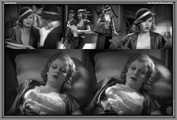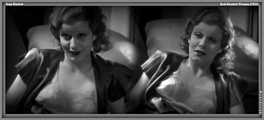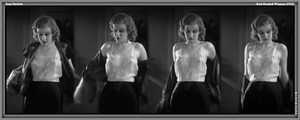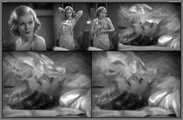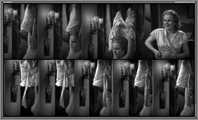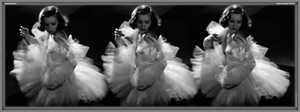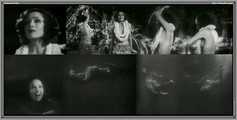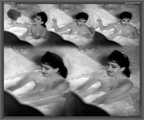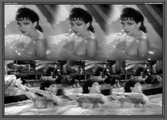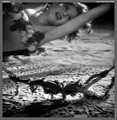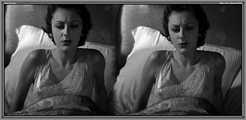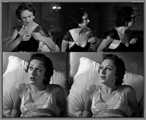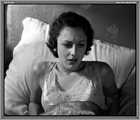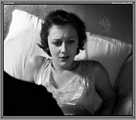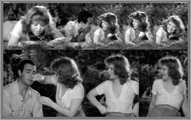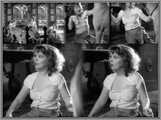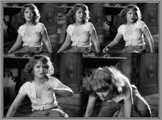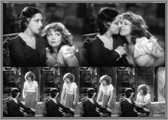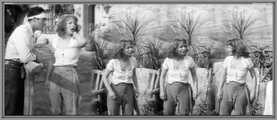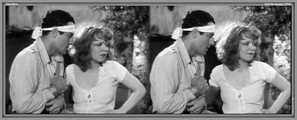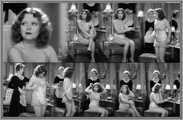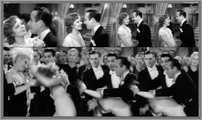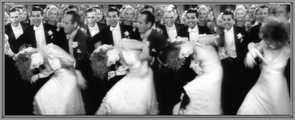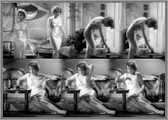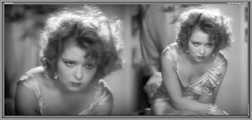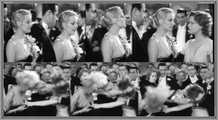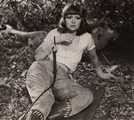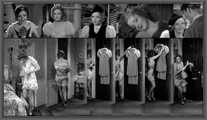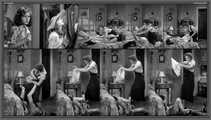A very hi-def scan of Florence Pugh glammed up
Day: February 8, 2020
not really -licious, to be honest.
A .gif of Valerie Hartman in the somber masterpiece, Sleepaway Camp 2: Unhappy Campers (1988)
We owe this film so much. It is truly a transformative experience. Without it, we would have been eternally befuddled by the complex and mystical questions posed by Sleepaway Camp 1.
A .gif of Sydney Sweeney in Euphoria (s1e1) – “Brightened, Sharpened & Color Boosted”
All comments and images by Brainscan. (And also the film clips in the members’ area.)
1932
There was a time … then it all went wrong.
For a time, between 1930 and the middle of 1934, Hollywood passed though the Pre-Code Era, famous for the lax enforcement of The Hays Code, which prohibited so many things. For good reasons, we can push back the unofficial start date of the Era to 1929, right after studios had finished the expensive renovation of theaters (yup, they owned the theaters that showed the movies they made) and the stock market crashed to begin the Great Depression. Hollywood needed the money to keep flowing in, but folks stopped going to movies so often as they had in the past. So, Hollywood needed something to bring folks into the theaters and they learned – not for the last time – that sex sells. Problem was this: SCOTUS had ruled movies unworthy of 1st amendment protection, so some states and many cities rolled out the censors with their sharp knives. Enter the Hays Code, written for the studios and meant to keep censors at bay. For a while, studios ignored the Code and got away with it, thus we have the Pre-Code Era, with movies that tried to show enough to keep the crowds coming but not so much to get the censors’ knickers in a twist.
For a reader of the Funhouse, 1932 was the best of the Pre-Code years, the best of all years for a long, long time. In that year, four of the biggest stars in Hollywood – Jean Harlow (seen below in a publicity still from Red Dust),
Greta Garbo, Claudette Colbert and Carla Bow – would display just enough skin to fit nicely in the Funhouse, had it been around back then. Dolores Del Rio, Nancy Carroll and Ann Dvorak, who were famous at the time, sort of joined them. It was a very good year.
Their scenes, together, illustrate what directors and producers would do to tease audiences. These three rules dominated: 1) Get an actress in flimsy clothes and no under-garments; 2) Get an actress out of her dress to show off her under-garments; 3) Get an actress out of her clothes and into the water.
Jean Harlow in Red-Headed Woman spends a lot of time in under-garments (rule #2),
obey rule #3 – out of clothes and into water. Gotta figure Claudette’s scene in Sign of the Cross would have won the prize for best of the year.
As a bonus, famous fan-dancer Sally Rand appears in Sign of the Cross as a Christian martyr, sacrificed to a crocodile.
Ann Dvorak, in Three On a Match, does rule #2 real well, too, as she relaxes in a flimsy nightgown. This is a great movie, by the way, filled with gritty scenes and a tough message, and Ms. Dvorak is terrific in it. Not sure why she was not a bigger star
The winner in the rule #1 category is Clara Bow in Call Her Savage. In an extended scene that covers 15 minutes of screen time, Ms. Bow rides a horse, has three conversations and plays with a dog in a thin, silk shirt and no under garments. It is a jiggle show 40 years before Charlie’s Angels, and every once in a while, she gets very close to revealing hidden treasures in this one, long scene. Later on in the movie, she opts to parade around in a nightie.
The real fun, however, starts with a cat fight between Clara and Thelma Todd.
In the tussle, we wind up seeing much more than either actress intended, as each combatant seems to go out of her way to rip open the other’s dress. The result is impressive and revealing, and when this movie shows up in HD, I am going to spend a week going back over this one scene.
Clara ends the movie back in a silk outfit. In this scene, without any dialogue, Clara Bow shines again. Asked to deliver lines earlier in the movie, especially ones that prompted the cat fight, Ms. Bow is horribly out of her element. I imagined Katharine Hepburn delivering these same lines and could see how they would draw real blood. Ms. Bow delivers them as though she were reading lines written by someone else, which of course she is, but the point of acting is to make it seem otherwise. The words wind up falling flat and they make her character appear pathetic, not formidable. Silent films were her medium because her face could act. Sad to say, she could not.
My favorite movie of this bunch is Hot Saturday. In a single scene, Nancy Carroll strips out of her dress into a slip
The film clip doesn’t offer much to see, but still is risqué and, therefore, very typical of 1930-34 movies.
The film, itself, looks very much like a play written 320 years earlier by the Bard. It follows the plot of Much Ado About Nothing for much of its length, in that a false rumor started by an evil cad about a woman’s loose morals costs her not only her reputation, but also a husband. Unlike in Much Ado, however, the maligned gal in Hot Saturday does not accept her betrothed’s apology when he discovers the lies behind the rumors, and they do not end the movie as a happy couple. She wins in the end, but on her own terms. She hears about the rumors, realizes why everyone in the town had been treating her so abysmally, says fuck it and goes off to spend the night with the guy she was rumored to have shtupped (Cary Grant). The movie ends with the two of THEM in a car as they ride away to get married. Now, that is a damn good story.
For Scoop’s notes, “continue reading.”
Continue reading “Brainscan presents- Hollywood nudity in 1932”
In this pic, Bella Hadid seems to deserve that title the plastic surgeon awarded her as the “most perfectly beautiful woman”
Diane Lane in Unfaithful (2002)
Chloe Grace Moretz taking selfies before a birthday dinner, Feb 7
Florence Pugh in a brightened clip from Outlaw King (2018)
From “Silent Night, Deadly Night 3” (1989)
Beautiful! (New)
Speaking of mammoth asses, she is seen here with Pete Davidson, playing Barbie to his Ken.
The full photoshoot is here
MUCH more Julia Fox nudity and info here


